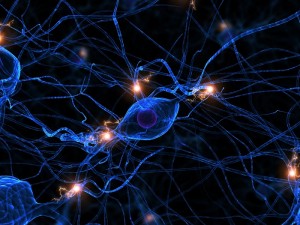A Closer Look at ALS
ALS, or amyotrophic lateral sclerosis, literally means “no muscle nourishment.” Also known as Lou Gehrig’s disease, this illness can affect people differently. Whether it begins with trouble lifting a glass or slurred speech, it’s important to tell your physician about such symptoms in order to determine the cause.
John K. Lynch, DO, MPH, an osteopathic neurologist from Bethesda, Maryland, provides key information to help increase your understanding of this life-altering disease.
Doctors of Osteopathic Medicine, or DOs, look beyond your symptoms to understand how lifestyle and environmental factors affect your wellbeing. They listen and partner with you to help you get healthy and stay well. They also encourage your body’s natural tendency toward self-healing.
What is ALS?
According to Dr. Lynch, ALS, also known as Lou Gehrig’s disease, is a rapidly progressive and fatal neurological disease that attacks the nerve cells responsible for controlling the voluntary muscles in the arms, legs, and face.
For people with ALS, these nerve cells die and stop sending messages to muscles.
Nerve cells located in the brain, brain stem, and spinal cord serve as controlling units and vital communication links between the nervous system and the voluntary muscles of the body. However, ALS causes these nerve cells die and stop sending messages to muscles.
“Unable to function, the muscles gradually weaken and waste away, eventually eliminating the ability of the brain to start and control voluntary muscle movement,” he adds. “With voluntary muscle action progressively affected, patients in the later stages of the disease may become totally paralyzed.”
What are the Signs?
“The onset of ALS may be so subtle that the symptoms are overlooked; however, there is a combination of signs that can help your doctor in their diagnosis,” says Dr. Lynch. These signs include:
- Cramps
- Tight and stiff muscles
- Muscle weakness affecting an arm or a leg
- Slurred and nasal speech
- Difficulty chewing or swallowing
Often, people will first notice symptoms that affect their legs, hands or arms, which can make buttoning a shirt, writing, or walking difficult. These symptoms worsen as muscles become weaker as time passes.
“Eventually individuals won’t be able to stand or walk, get in or out of bed on their own, or use their hands and arms,” Dr. Lynch explains. “And, unfortunately, in the later stages of the disease, individuals will lose the ability to breathe on their own and depend on ventilator support for survival.”
Diagnosis
No single test can provide a definitive diagnosis of ALS. “Typically, a physician will base their diagnosis on an individual’s medical history, observed symptoms, a series of tests to rule out other diseases, and a neurologic examination at regular intervals to assess whether symptoms such as muscle weakness and breakdown are getting progressively worse,” explains Dr. Lynch. Because of the prognosis carried by this diagnosis and the variety of diseases or disorders that can resemble ALS in the early stages, Dr. Lynch recommends patients obtain a second neurological opinion for confirmation of the disease.
Treatment Options
Unfortunately, there is no cure for ALS. However, a physician who specializes in the disease can prescribe a treatment plan to improve one’s quality of life, including:
- Exercise such as stretching and low-aerobic activities like walking, swimming or stationary bicycling to help strengthen unaffected muscles
- Prescription medications
- A sleep ventilation device to help those who experience breathing difficulties while they sleep
